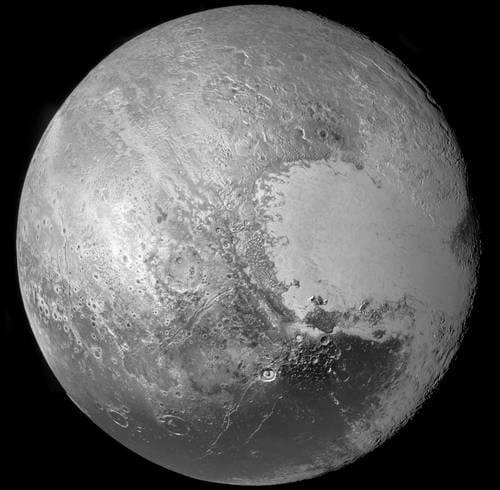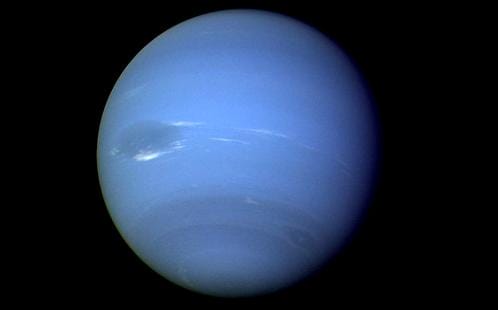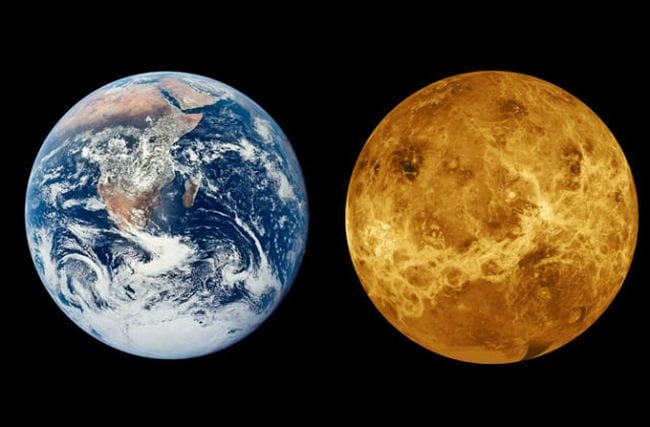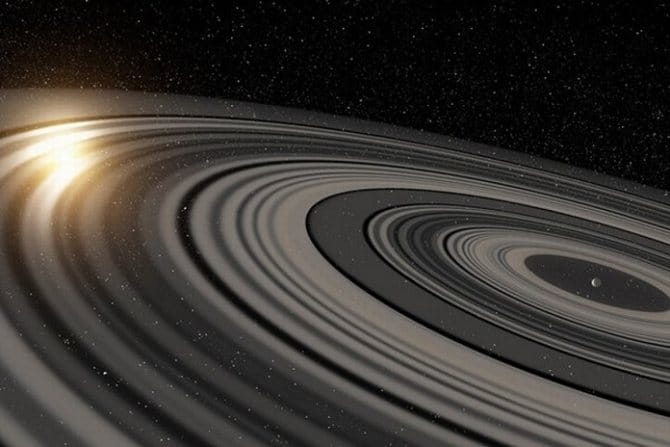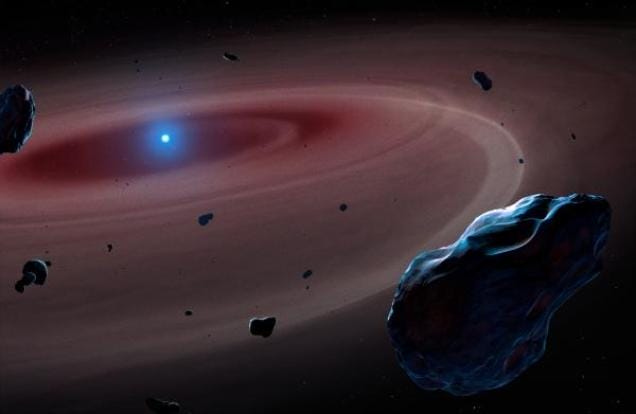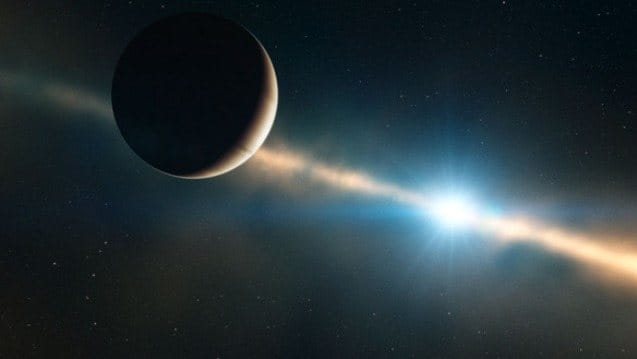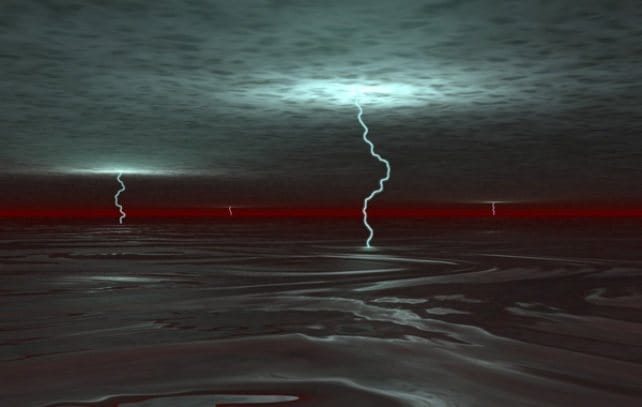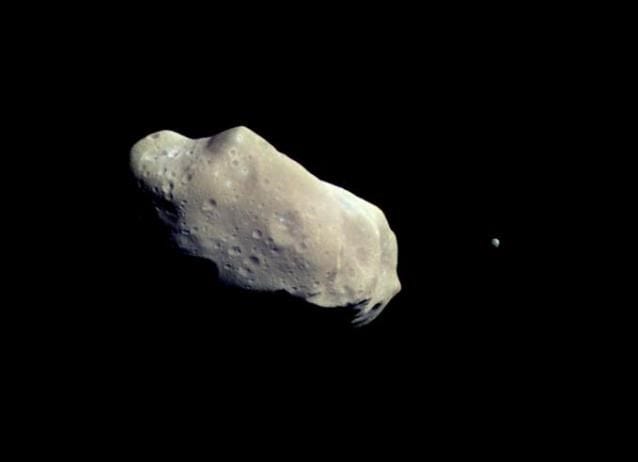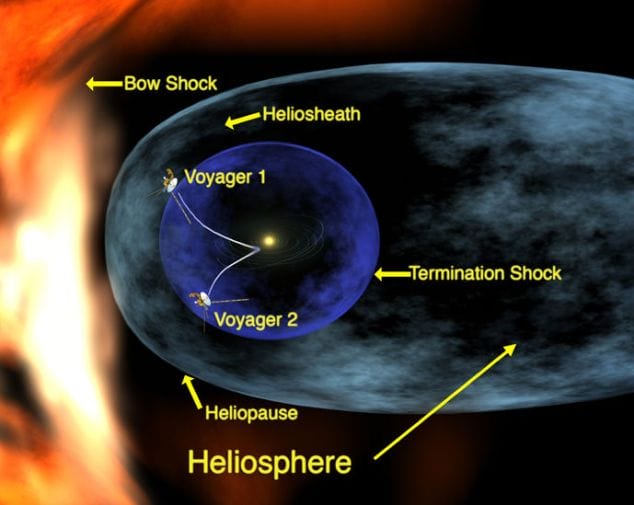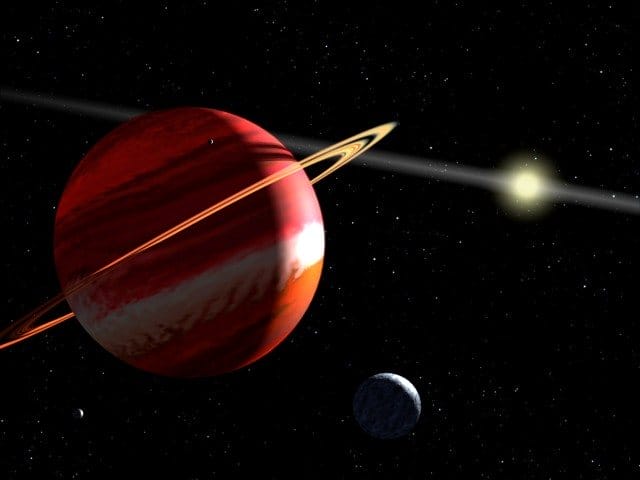First fact
There are 5 dwarf planets in the solar system – one of them is Pluto, recently demoted from the planets, the other four are Ceres, Haumea, Eris and Makemake.
Second fact
Uranus is the only planet that orbits on its side. Its axis is tilted 98 degrees to the orbital plane! Most likely, in the distant past, Uranus was subjected to a powerful impact, because of which it “lay on its side.”
Third fact
Jupiter pulls together almost all space debris, thanks to which life on Earth can feel safe.
And all due to the fact that Jupiter is the largest planet in our solar system, and with its powerful gravity attracts asteroids, comets and other debris, which practically do not affect it in a collision.
Fourth fact
Previously, it was believed that the solar system ends somewhere in the orbit of Pluto. But with every year of research, more and more new facts were discovered.
So, for example, behind Pluto, the Kuiper belt was discovered, then the Oort Cloud, thus, the boundary of the Solar System lies in billions of kilometers from Pluto.
Fifth fact
The distances in space are so huge that it would seem that there are not so many kilometers between the Moon and the Earth, but all the other planets of the solar system would fit between them!
The hottest planet in the solar system
The planet closest to the Sun in our solar system is Mercury. The distance from it to the hot surface of the star is only about 70 million kilometers at the farthest point, and it is twice as close as the Earth. And at the closest point, this distance is completely reduced to 46 million kilometers – three times closer than from the Earth to the Sun.
Of course, the surface of Mercury should be almost red-hot and this is probably the hottest planet in the solar system! But this is not the case.
Of course, the surface of Mercury on the daytime side heats up a lot – up to +350 degrees Celsius. But it is very loose and has good heat-insulating properties, therefore, already at a depth of 1 meter, the temperature is only +75 degrees. So Mercury is not red-hot at all. Moreover, it does not have an atmosphere that would at least slightly retain heat at the surface, and it immediately cools down to a deep minus as soon as it falls into the shadow.
The hottest place on Mercury is near the equator, where the Sun shines directly from the zenith. There, the surface can heat up to +427 degrees Celsius when the planet is at the point closest to the Sun. There are no higher temperatures there.
Now let’s move to Venus and see what’s going on there. This planet has a thick atmosphere and a powerful greenhouse effect. So, the average surface temperature in this gloomy world is +467 degrees Celsius. Average means it can be hotter. And this is more than on Mercury, although Venus is farther from the Sun.
Surface of Venus. Photo of the Soviet automatic station “Venera-13”.
Therefore, Venus is the hottest planet in the solar system, with an average surface temperature of +4670 C. There are no higher temperatures on any other planet.
Surface of Venus
This world is absolutely dead. It is impossible to find here even a hint of the existence of even the simplest forms of life. The endless desert, dotted with volcanoes and huge craters, stretches for thousands of kilometers. Some of these objects are up to 100 km in size. The number of volcanoes, according to planetary scientists, exceeds one and a half thousand, and the breakthrough of lava masses lasts several times longer than on Earth.
The surface layer is relatively thin and weak. Because of this feature, incandescent magma flows do not stop erupting outward, which indicates the constant activity of tectonic plates.
A hot world in space
This space object is devoid of satellites, and the orbit of motion is a regular circle. However, rotation around its axis is opposite to movement in orbit around the Sun. Such an unusual fact leads to the fact that the day on Venus is 116 earthly, and the day and night last 58 times longer.
The hottest planet in the solar system is also the brightest observable object from Earth after the Moon. An incredibly dense atmosphere is remarkably capable of reflecting streams of sunlight. It is best to observe it in the early morning or in the evening near the edge of the horizon.
Pluto
Pluto is a dwarf planet made of ice and rock. Originally considered the ninth planet, Pluto is the farthest from the sun and has the lowest temperatures, averaging around -225º C. Temperatures on Pluto depend on its proximity to the Sun: as the planet approaches a star, the temperature of the atmosphere becomes significantly warmer. The surface temperature is colder than the atmosphere due to the influence of methane, which creates temperature inversions. Pressure waves in the atmosphere lower temperatures, making them colder than expected.
Neptune
Since Pluto was disqualified as a planet, Neptune has been considered the coldest planet in the solar system with an average temperature of about -200º C. Neptune is the eighth planet in our system, composed primarily of hydrogen and helium. The planet experiences pressure and temperature fluctuations depending on altitude. Due to the large distance from the Sun, the temperature on Neptune is more dependent on the radiation inside the planet itself than on the star. Its elliptical slope of 23.4º heats the upward side, raising the temperature by about 10º C, thus avoiding the release of methane. Temperature fluctuations are also noticeable in the inner part of the planet, which occur during movement around the sun or under the influence of internal factors such as winds and pressure changes.
What does the name of the planet mean?
This planet was named after the ancient Roman goddess of love. Quite curious is the fact that this is the only planet that was named by a female name. Perhaps Venus was named so because it shone much brighter than all the planets known to astronomers at that time. Translated from Latin, the name “Venus” means “Evening Star” or “Lucifer” (Satan in Christianity).
What are the features of the planet?
The planet Venus, the second in position to the Sun, is quite a bit smaller than our planet Earth. Due to the almost identical size, density, mass and composition, these planets are even referred to as twins. However, with these parameters, their similarity ends.
The hottest planet in the solar system is located one hundred and eight million kilometers from the sun. There are no companions around her. A day here lasts about 243 Earth days. For 225 of the same day, the planet makes a revolution around the celestial body. The surface of Venus is hard, craters and volcanic landscapes. It rotates in the opposite direction, from which it follows that the sunrise occurs in the west, and sets in the east.
The atmosphere of Venus is very heavy and even “hellish”. The pressure on it is ninety times the pressure on Earth. The surface of Venus does not have any liquid, but is explained by the highest temperature, which causes the process of boiling and evaporation. Also, the planet has mountain ranges and valleys, which, according to scientists, were formed when hot materials were raised to the surface, which led to surface deformation.
What makes the planet KELT-9b unique?
The temperature of KELT-9b is 4600 Kelvin, which is higher than in the outer layers of the Sun. The temperature of the photosphere of our celestial body is 5800 Kelvin.
In all likelihood, the side of the planet, facing the luminary, is surrounded by rarefied atoms, which, due to the high temperature, cannot combine into molecules. In addition, a hot “tail” stretches behind it, like a comet. And since the molecules disintegrate on one side, then on the other, less hot, all heavy metals present in the composition of the KELT-9b surface are concentrated.
If we saw KELT-9b from Earth with the naked eye, it would seem to us a little dimmer and darker than the Sun. At night, the planet would remind us of a red dwarf (red dwarfs are a type of stars; their number prevails in the known universe).
It is noteworthy that KELT-9b is a very large exoplanet. Its mass is almost 3 times that of Jupiter, and 13 times that of the Sun. Its volume exceeds that of Jupiter by more than 7 times. Moreover, its density is much lower in comparison with the density of the largest planet in the solar system, since due to the high temperature it is in a rarefied state.
Almost Saturn
Planet J1407B looks like one large optical illusion. The fact is that in shape it is very similar to Saturn, only instead of seven rings, the planet has 37 of them. The rings cover almost 120 million km – this is 200 times more than the rings of Saturn! The planet is located not very far from the Earth (when compared with the coldest) – only 435 light years away.
Professor of physics and astronomy Eric Mamajek said on this occasion: “This is probably the first indirect evidence that the planets have satellites even outside our solar system.”
Almost everything on planet Earth is a rare element.
The earth is mainly composed of iron, oxygen, silicon, magnesium, sulfur, nickel, calcium, sodium, and aluminum.
Although all of these elements have been found in different places throughout the universe, they are only traces of elements that overshadow the abundance of hydrogen and helium. Thus, the Earth is mostly composed of rare elements. This does not mean any special place on planet Earth, since the cloud from which the Earth was formed contained large amounts of hydrogen and helium. But since these are light gases, they were carried away into space by the heat of the sun as the Earth formed.
The solar system has lost at least two planets
Pluto was originally considered a planet, but due to its very small size (much smaller than our Moon) it was renamed a dwarf planet. Astronomers also once believed that the planet Vulcan existed.
which is closer to the Sun than Mercury. Its possible existence was talked about 150 years ago to explain some of the features of the orbit of Mercury. However, later observations ruled out the possibility of the existence of the Volcano.
In addition, recent studies have shown that there may have once been a fifth giant planet.
, similar to Jupiter, which revolved around the Sun but was ejected from the Solar System due to gravitational interactions with other planets.
Jupiter has the largest ocean of all planets
Jupiter, which orbits in cold space five times farther from the Sun than planet Earth, was able to hold much higher levels of hydrogen and helium during formation than our planet.
You could even say that Jupiter is mainly composed of hydrogen and helium.
… Given the planet’s mass and chemical composition, as well as the laws of physics, under cold clouds, an increase in pressure should lead to a transition of hydrogen to a liquid state. That is, Jupiter must have the
deepest ocean of liquid hydrogen
. According to computer models on this planet, not only is the largest ocean in the solar system, its depth is about 40,000 km, that is, it is equal to the circumference of the Earth.
Even the smallest bodies in the solar system have satellites
It was once believed that only such large objects as planets can have natural satellites or moons. The fact of the existence of satellites is sometimes even used to determine what the planet really is. It seems counterintuitive that small cosmic bodies can have enough gravity to hold a satellite. After all, Mercury and Venus don’t have them, and Mars only have two tiny moons.
But in 1993, the Galileo interplanetary station discovered the satellite Dactyl, just 1.6 km wide, near the asteroid Ida. Since then, moons have been found orbiting about 200 other small planets.
, which greatly complicated the definition of “planet”.
We live inside the sun
We usually think of the Sun as a huge hot ball of light located at a distance of 149.6 million km from the Earth. In fact, the sun’s outer atmosphere extends far beyond the visible surface.
…
Our planet orbits within its tenuous atmosphere, and we can see this when gusts of the solar wind cause the aurora to appear. In this sense, we live inside the Sun. But the solar atmosphere doesn’t end on Earth. The aurora can be seen on Jupiter, Saturn, Uranus and even distant Neptune. The farthest region of the solar atmosphere is the heliosphere
extends for at least 100 astronomical units. It is about 16 billion kilometers. But since the atmosphere has the shape of a drop due to the movement of the Sun in space, its tail can reach from ten to hundreds of billions of kilometers.
Saturn is not the only planet with rings
While Saturn’s rings are by far the most beautiful and easy to observe, Jupiter, Uranus, and Neptune have rings too.
… While Saturn’s bright rings are composed of icy particles, Jupiter’s very dark rings are mostly dust particles. They may contain minor fragments of decayed meteorites and asteroids, and possibly particles from the volcanic moon Io.
Uranus’s ring system is slightly more visible than that of Jupiter, and may have formed after the collision of small satellites. Neptune’s rings are faint and dark, just like Jupiter’s. The faint rings of Jupiter, Uranus and Neptune cannot be seen through small telescopes from Earth, which is why Saturn has become best known for its rings.
Explore the planet
The usual temperature for Venus is 8 times the highest recorded temperature on Earth. It seems that it is impossible to explore the planet, but it is not. The Soviet Union has dispatched spacecraft called Venus on numerous occasions. They entered the atmosphere and took several surface images. In 1981, the Venera 13 research vehicle landed on the planet and stayed there for 127 minutes. He managed to make color photographs for earthlings.
The last ship, the Venus Express, was dispatched in 2005. The device studied the planet’s surface, atmosphere, clouds, environment. The spacecraft ceased operations in 2014, it lost control of control and allegedly burned up in the atmosphere of Venus in 2015.
Today, the Japanese Akatsuki spacecraft, which began its mission in 2015, is exploring the second planet of the solar system. The ship was originally expected to operate until 2019, but it is still collecting data for scientists.
Akatsuki (Morning Dawn) is a Japanese probe launched on May 21, 2010 to study Venus. Due to technical problems, the goal was only achieved in 2015. Work on the study of the planet is planned to be extended until the end of 2019.
Before spacecraft were sent to the planet, earthlings made incredible guesses about what is behind the layers of the atmosphere. Science fiction writers were convinced that tropics and impenetrable jungles were located on the surface. But the “hellish” temperature and lack of water surprised many.
There are five dwarf planets in our solar system
It’s amazing how such cosmic bodies as “dwarf planets”, the moon and full-fledged planets differ. Dwarf planets are fairly large celestial bodies that do not dominate their orbit to be called true planets. However, they do not orbit other planets, such as the Moon. The five dwarf planets include the recently demoted Pluto, Ceres, Eris, Haumea, and Makemake.
There are not so many asteroids in the solar system
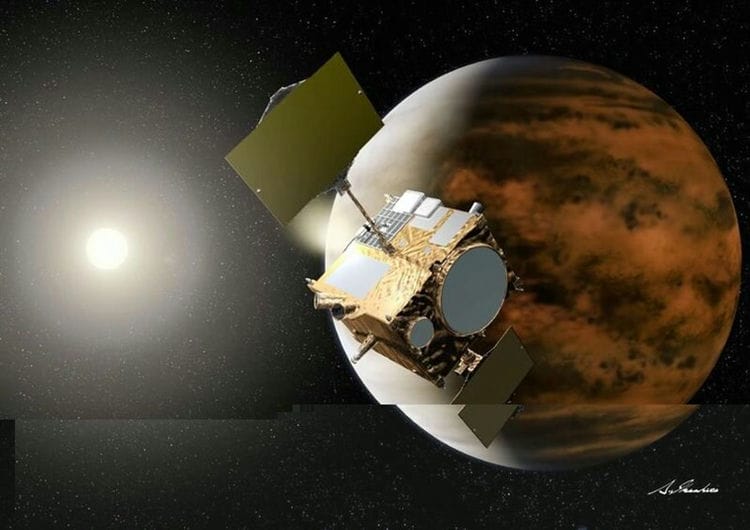
Although it is scientifically proven that our solar system has a large asteroid belt between Jupiter and Mars, as well as small groups of asteroids, we believe the films more. We represent spaceships scurrying between asteroids. In fact, there is so much space between them that it is not at all necessary to scurry.
One day on Mercury is 58 Earth days
The seasons on Uranus last twenty years

Uranus is tilted at 82 degrees, which makes it appear to lie on its side in orbit. Each season on the planet is equal to 20 Earth years. It is quite possible that this is the reason for such strange weather phenomena on this “littered” planet.
There are rocks on Earth from Mars
And we didn’t bring them here. A detailed study of comets that fell in Antarctica and the Sahara Desert showed that it seems that these celestial bodies were originally formed on Mars. Analysis of the substance has revealed a gas that is indistinguishable from the atmosphere of Mars. Perhaps these comets were once part of the red planet or were the result of a volcanic eruption and only later flew to Earth.
The only object with an Earth-like atmosphere is Titan.
Contrary to popular belief, in the solar system there is a body with an atmosphere essentially similar to that of the earth. This is Saturn’s moon Titan. It is larger than our Moon and is close in size to the planet Mercury. Unlike the atmospheres of Venus and Mars, which are much thicker and thinner, respectively, than Earth, and are composed of carbon dioxide, Titan’s atmosphere is mostly nitrogen.
The Earth’s atmosphere is approximately 78 percent nitrogen. The similarity with the Earth’s atmosphere, and especially the presence of methane and other organic molecules, led scientists to believe that Titan can be considered an analogue of the early Earth, or there is some kind of biological activity. For this reason, Titan is considered the best place in the solar system to look for signs of life.
Sources used and useful links on the topic: https://zen.yandex.ru/media/entertaining_astronomy/10-faktov-pro-solnechnuiu-sistemu-5dac6794ecfb8000b06be1fe https://astro-world.ru/samaya-goryachaya-planeta-vo -vselennoj / https://CosmosPlanet.ru/solnechnayasistema/venera/samaya-goryachaya-planeta-solnechnoj-sistemy.html https://NatWorld.info/raznoe-o-prirode/samye-gorjachie-i–holodnye-planety solnechnoj-sistemy https://topkin.ru/best/priroda/samaya-goryachaya-planeta-solnechnoj-sistemy/ https://www.syl.ru/article/349016/kakaya-planeta-samaya-goryachaya-v-solnechnoy -sisteme https://maginarius.ru/planety/samaya-goryachaya-planeta-solnechnoj.html https://zen.yandex.ru/media/allmost/samaia-goriachaia-planeta-solnechnoi-sistemy-5ca705f473462700b2280d82 https://fishki.net/1944688-interesnye-fakty-o-solnechnoj-sisteme.html https: // Lifehacker.ru/10-udivitelnyh-faktov-o-solnechnoj-sisteme/ https://www.infoniac.ru/news/10-faktov-kotorye-vy-ne-znali-o-Solnechnoi-sisteme.html

